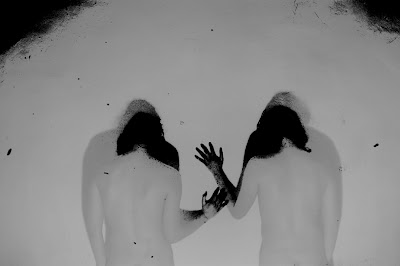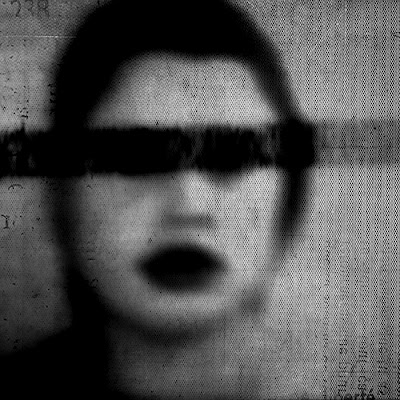(5 Day Intensive at Centre of Gravity, 180 Sudbury Street, Toronto, September 25-29, 2011. Talks by Michael Stone, notes by MH (with errancies, mishearings, conjectures. This is talk 4 of 5 on a Chinese poem (often chanted in Zen monasteries) called Sandokai written in the 1st century, strained through Suzuki’s commentary in Branching Streams Flow in the Darkness.)
Practice
Practice in community this week has meant becoming the dharma, becoming the Buddha, becoming the sangha. There’s a knowing that we’ve been trying to touch this week that’s always there. People think there’s a labyrinth to traverse in order to find the thing that’s always there, to come to the end of awareness, the end of their thoughts, to ‘go clear’ (as Leonard Cohen puts it) – but just try having zero awareness for a moment. It’s impossible. Awareness is always there, what we’re trying to do is release our habit patterns, our holding patterns, to get underneath them and touch the intrinsic place of non-harming, of love.
All week we’ve been studying this text called the Sendokai (the many and the one shaking hands), and yesterday we did this by going to the law courts. Going to the courts was a way of living the Sendokai, of being with the many and the one in situ, in the world. It was an invitation to practice compassion. This is a new frontier for neuroscience that is discovering that compassion links up all the parts of your brain, and it’s really good for your immune system. When you can have compassion your immune system thrives, and it’s good for the people around you. Why? Because it relieves the habit patterns of self centeredness.

Guns and Thunder
Sendokai: “Don’t set up standards of your own.” So much of our pain comes from trying to be right. This summer we were on retreat at the Grail, a small house beside West Point, do people know what that is? Yes, it’s a military academy where they are training the killers of tomorrow. The officers who will lead the charge. We were skinny dipping one afternoon watching the clouds, and most of the group was Bolivian so I couldn’t understand a word they were saying and perhaps this gave me more relief than it should have. And while we were floating about the guns were firing, and I was busy formulating ideas about military culture, and the kinds of people who would attend a school like this, and what they were going to do. I started sharing some of these ideas and we got into a big group froth about how awful they were, firing those guns day and night. While we were talking the sky was getting dark, but we were too busy to notice it, and then it started raining, and we realized that what we thought were guns was actually thunder. We had our fixed view about West Point, so we couldn’t feel what was happening, experience our experience, instead we shrunk into the abstraction, the idea of our experience.
The Sendokai says it’s OK to be wrong. There are no absolute standards. When we study ethics we aren’t memorizing eternal laws that need to be adhered to, instead, we are engaged in a situational ethic. (Stephen Batchelor says that situational ethics means that we don’t ask what is the right thing to do, but what is the most compassionate thing to do?) We are working on three levels for each of the five ethical precepts (non-harming, honesty, not stealing, the wise use of sexual energy, not being greedy). In Yoga these are known as the yamas, they are the first limb of Yoga. When we study ethics we study through 1. the literal level: non-harming means simply: don’t kill. 2. The bodhisattva level or compassionate level. Sometimes there’s a time to kill for the benefit of others. 3. Koan level – you are killing and you are non-violence. Pat Smith is an abortion provider – her work is doing non-violence even as she’s killing. What is the koan level of non-violence in relation to eating? The word meal comes from the Sanskrit word mrt – it means to grind down. When you have a meal you’re grinding down life in order to support other life. The koan level emerges from the lived understanding that you are in the web, that you are the web.
Wherever you are there’s always a standard. The standard is the response you’re making with your body. How to keep this flexible? When you’re stuck in what’s right and wrong you suffer.

Better than ice cream
The experience of changing your mind is deeper than nirvana. The deepest experience of your life is being able to change your mind. To realize and admit and act from that place where you are able to see that you’re wrong. To be able to have your mind changed. Being a person is as esoteric as it gets. Everything you do is holy, even your mistakes. Treat them with softness, with respect. And then let them go.
What we usually experience as reality, as my reality, is an oscillation of fictions, temporary and arising and passing away. Your position can only be right at that moment, in the next, another position is necessary. Where you are is temporary, and the light will change into darkness, and then the darkness will turn to light. There’s nothing worse than being in upward facing dog longing for downward facing dog. When you can appreciate this moment, the full darkness of this moment of darkness, then you can appreciate yourself. You’re amazing. How do you realize how amazing you really are without becoming self centered?
Sendokai: “Ordinary life fits the absolute as a box and its lid.”
One side is about embracing, the other side is letting go, and we’re all afraid of the letting go side. The more people we have in our group, the harder it is to let go. When you get to the level of nations it’s really hard.
Sendokai: “The absolute works together with the relative like two arrows meeting in midair.”
The Chinese legend says that there were a pair of high level competitive archers. Eventually they were put on either end of a field and they fired towards each other. They were so skilled that their arrows met. After that moment, these bitter enemies became friends.
All the parts of you – the self-centered side and the generous side, fit together perfectly. Can you accept that?
Background
How can you live the Sandokai? It means cultivating the background. If the foreground is separation (the branching streams), cultivate the background of the subtle source. In a life of busyness and noise, it means cultivating silence. To commit to periods of being quiet. When you lose touch of yourself you lose touch of everything.
Ryokan (1758–1831) was a poet and monk. He left the city in order to live in a tiny hermitage in the back of someone’s property. He would meditate every day, then play with kids. He was also a great calligrapher, and occasionally would be hired to paint. Once he was asked by a wealthy couple to come and write on their gold wall, he was encouraged to write whatever was happening in that moment, something appropriate for their house. He wrote, in beautiful, perfect letters, “I can’t stand doing this.”

Death Poems
In Zen there is a tradition of writing your death poem. If you’re a teacher you write a death poem on your birthday. Ryokan’s death poem:
My legacy, what will it be?
Flowers in the spring
the sound of the bird in the summer
The crimson maples of autumn
Where’s Ryokan in all this? Everywhere and nowhere. Most people think of the direct impressions, or the emotions, or their possessions, their legacies of actions and thoughts. How do you squander your life? Perhaps by imagining you leave something behind.
The way you respond in each moment is creativity. What you make of these conditions – or as Bernie Glassman says, what kind of meal can you make with what you have? Homework: every night before you go to bed write a death poem. The first line could read: My legacy, what will it be? Or perhaps it could simply read: After I die. And there might be three lines that follow.
Mike
After I die
a quickening of the pulse
an open mouth
exhaling.
After I die
an old library book
A creased triangle marking a page
unfolded.
After I die
the generosity of funerals
taxi!
Jenny Tumas
After I die, our children’s plastic sand pails
still sit half buried in a Wyoming badlands garden
under cherry tomatoes
and they are walking to school
with armloads of peonies for their teachers.
My legacy
what will it be?
poems arriving
mysteriously.
Grant Hutchinson
What will I leave behind?
What is spreading in the ten directions
even me
even now, attempting to gather.

